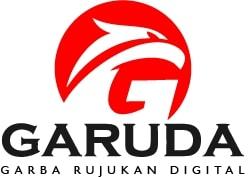UJI DAYA HAMBAT SEDIAAN TONER WAJAH INFUSA DAUN BELIMBING WULUH (Averrhoa bilimbi L.) TERHADAP Propionibacterium acnes
UJI DAYA HAMBAT SEDIAAN TONER WAJAH INFUSA DAUN BELIMBING WULUH (Averrhoa bilimbi L.) TERHADAP Propionibacterium acnes
Abstract
. This research has been made with the objective to determine at what concentration the infusa of bilimbi leaves (Averrhoa bilimbi L.) in the form of facial toner preparations can inhibit Propionibacterium acnes bacteria optimally. The method used in this research is a laboratory experimental method by testing the inhibition of toner preparations. Belimbing wuluh leaves were extracted using the infusa method then made facial toner preparations with concentrations of 10%, 20% and 30% and tested with the paperdisk method. From the results of the research on the inhibition of facial toner preparations of infusa extract of bilimbi leaves (Averrhoa bilimbi L.) showed that at concentrations of 10% and 20% could not inhibit the growth of Propionibacterium acnes bacteria. Meanwhile, the 30% concentration can inhibit the growth of Propionibacterium acnes bacteria optimally optimally with the inhibition zone around the paperdisk.
References
Badan POM RI (2011) “Acuan Sediaan Herbal, Edisi 1, Direktorat Obat Asli Indonesia, Badan Pengawas Obat dan Makanan Republik Indonesia, Jakarta,” Badan Pengawas Obat dan Makanan Republik Indonesia, hal. 1–89. Tersedia pada: https://perpus-fsk.unipasby.ac.id/index.php?p=show_detail&id=15&keywords=.
Davis, W.W. dan Stout, T.R. (1971) “Disc plate method of microbiological antibiotic assay. I. Factors influencing variability and error.,” Applied microbiology, 22(4), hal. 659–665. Tersedia pada: https://doi.org/10.1128/aem.22.4.659-665.1971.
Hasanah, N. dan Novian, D.R. (2020) “Daya Hambat Ekstrak Daun Belimbing Wuluh (Averrhoa bilimbi L) Terhadap Bakteri Penyebab Jerawat (Propionibacterium acnes),” Parapemikir : Jurnal Ilmiah Farmasi, 9(1), hal. 46. Tersedia pada: https://doi.org/10.30591/pjif.v9i1.1753.
Jala, D.A. dan Subchan, B. (2018) “Skrining fitokimia infusa daun beimbing wuluh (Averrhoa bilimbi L.) yang dipanaskan dengan variasi suhu 50°C, 65°C, 60°C dengan metode KLT,” hal. 1–9.
Rahmasari, E.N. dan Puspitorini, A. (2020) “Pemanfaatan Belimbing Wuluh (Averrhoa bilimbi L.) dan Minyak Zaitun untuk Masker Perawatan Kulit Wajah,” Journal of Beauty and Cosmetology, 2(1), hal. 57–68. Tersedia pada: https://journal.unesa.ac.id/index.php/jkk/article/view/11667/4868.
Sholikin, W.S.P.N. dan Kusstianti, N. (2020) “Pengaruh Proporsi Sari Pati Kentang, Ekstrak Lemon, Virgin Coconut Oil (VCO) terhadap Hasil Jadi Toner untuk Kulit Wajah Berminyak Cenderung Berjerawat,” Fakultas Teknik, Universitas Negri Surabaya, 09(2), hal. 254–263. Tersedia pada: https://jurnalmahasiswa.unesa.ac.id/index.php/19/article/view/34253/30480.
Sifatullah, N. dan Zulkarnain (2021) “Jerawat (Acne vulgaris): Review Penyakit Infeksi Pada Kulit,” Prosiding Biologi Achieving the Sustainable Development Goals , (November), hal. 19–23. Tersedia pada: http://journal.uin-alauddin.ac.id/index.php/psb.
Sukandar, D. et al. (2010) “Karakterisasi Senyawa Aktif Antibakteri Ekstrak Air Bunga Kecombrang (Etlingera elatior) Sebagai Bahan Pangan Fungsional,” Jurnal Kimia VALENSI, 2(1). Tersedia pada: https://doi.org/10.15408/jkv.v2i1.232.
Copyright (c) 2025 yusriyani burhamin

This work is licensed under a Creative Commons Attribution 4.0 International License.










